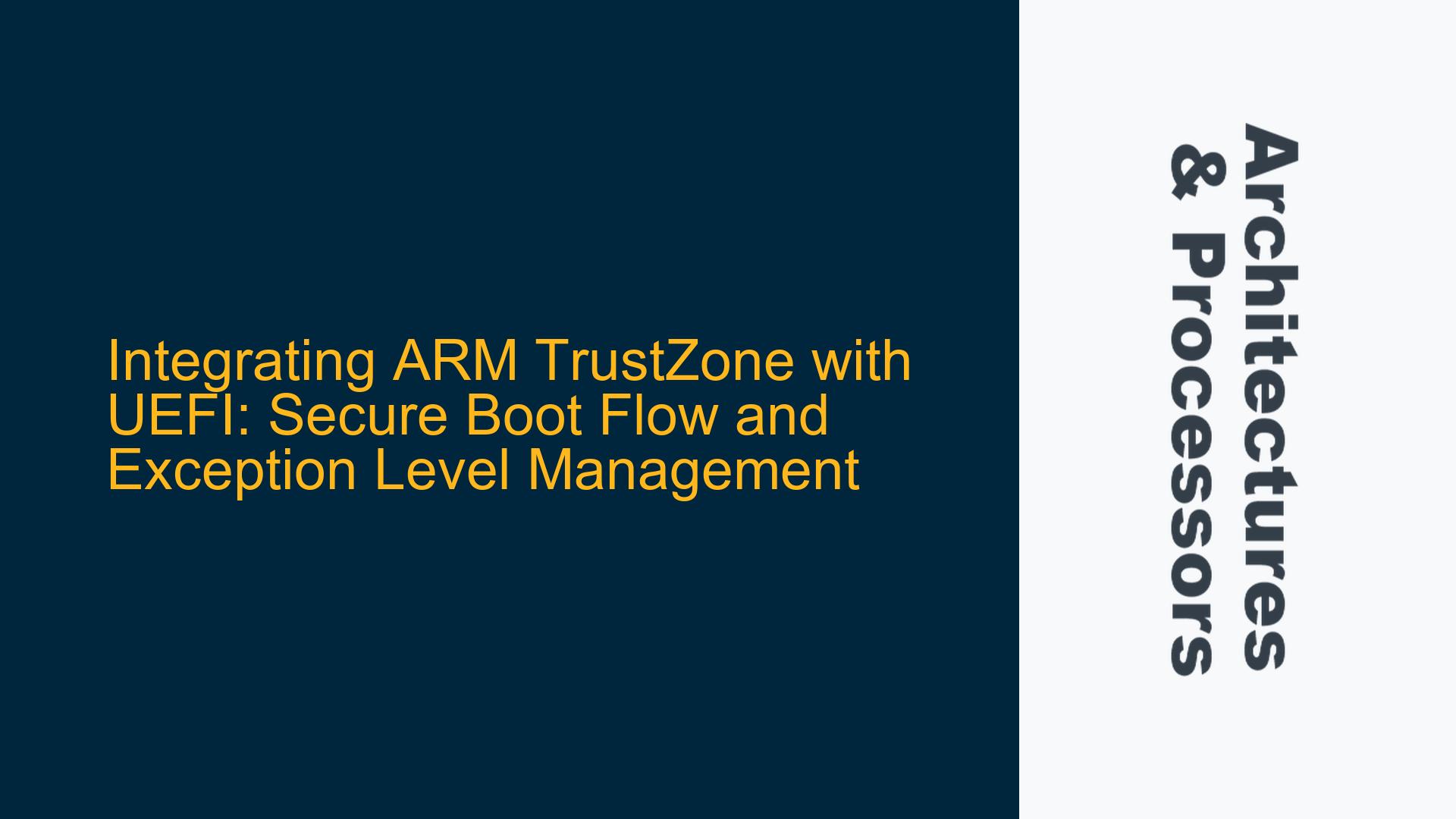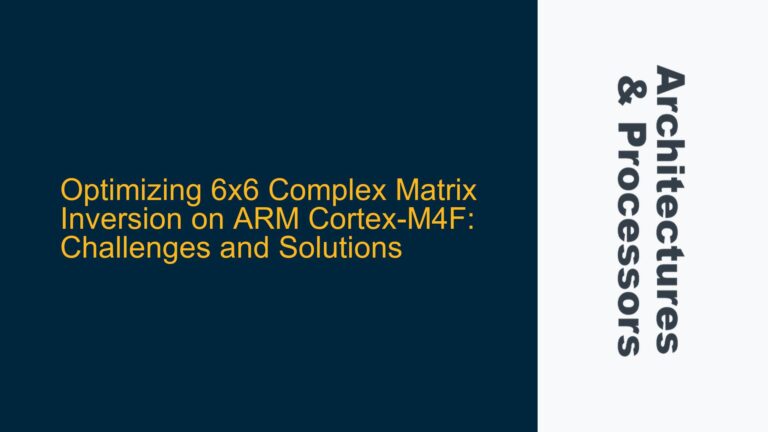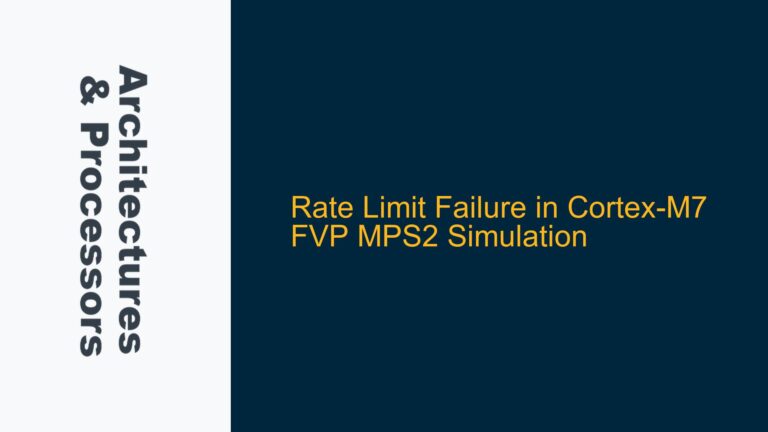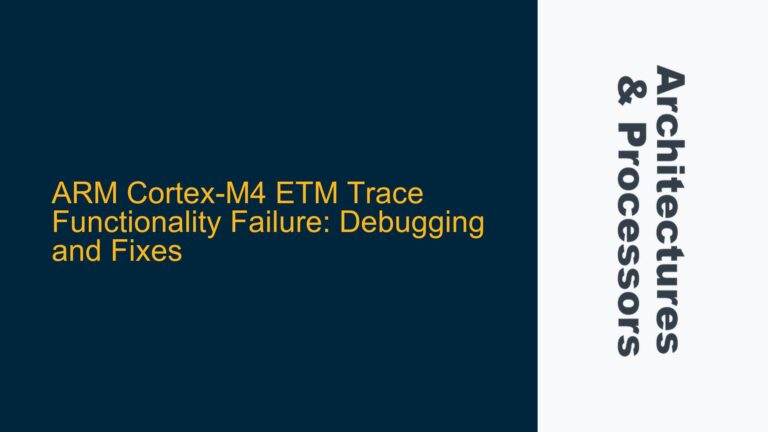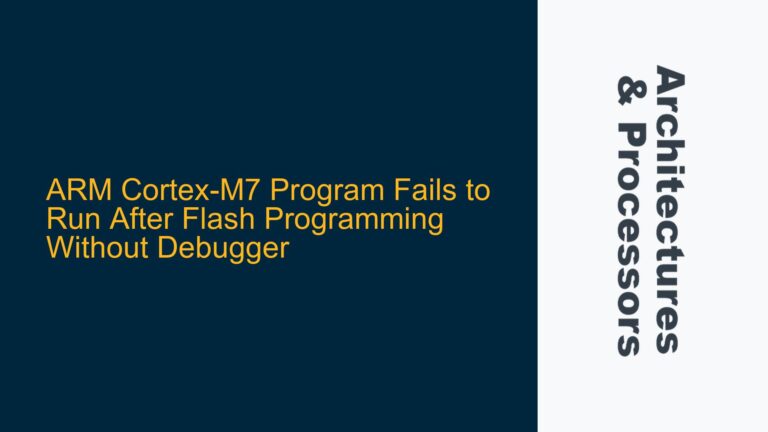ARM TrustZone and UEFI Integration Challenges in Secure Boot Flow
The integration of ARM TrustZone with UEFI presents a unique set of challenges, particularly when attempting to maintain the secure boot flow while ensuring that the Secure Monitor and Secure OS operate seamlessly within the UEFI environment. The primary issue revolves around the compatibility and interaction between the UEFI’s System Management Mode (SMM) and ARM’s Exception Level (EL) architecture. SMM, a concept native to x86 architecture, is absent in ARM, which instead uses EL3 to handle similar high-priority tasks. The core challenge lies in mapping the functionalities of SMM to ARM’s EL3 without disrupting the UEFI boot process.
In ARM architecture, the Secure Monitor operates at EL3, acting as the arbiter between the secure and non-secure worlds. The Secure OS runs at secure EL1, while secure application services operate at secure EL0. This hierarchical structure ensures that secure operations are isolated from non-secure operations, providing a robust security framework. However, integrating this structure within UEFI requires careful consideration of the boot flow, ensuring that the transition between UEFI and the Secure Monitor is smooth and does not introduce vulnerabilities.
The boot flow in a UEFI environment typically starts with the firmware initializing the hardware and loading the UEFI boot manager. The boot manager then loads the operating system or other bootloaders. When integrating ARM TrustZone, the Secure Monitor must be initialized early in the boot process, ideally before the UEFI boot manager takes control. This ensures that all subsequent operations, including those handled by UEFI, are within the secure environment. However, this early initialization must be done in a way that does not interfere with UEFI’s own initialization routines.
Misalignment Between UEFI SMM and ARM EL3 Exception Levels
One of the primary causes of integration issues between ARM TrustZone and UEFI is the fundamental difference in how x86 and ARM architectures handle high-priority system management tasks. In x86, SMM is a special operating mode that is entered via a System Management Interrupt (SMI). SMM operates at a higher privilege level than the operating system and has access to all hardware resources. This mode is used for tasks such as power management, hardware error handling, and other system-level functions that require high privilege and isolation.
In contrast, ARM architecture does not have an equivalent to SMM. Instead, ARM uses Exception Levels (ELs) to manage privilege and security. EL3 is the highest privilege level and is used for the Secure Monitor, which arbitrates between the secure and non-secure worlds. The Secure OS runs at secure EL1, and secure applications run at secure EL0. This difference in architecture means that the functionalities provided by SMM in x86 must be mapped to ARM’s EL3, which can lead to misalignment and integration challenges.
The misalignment between UEFI’s SMM and ARM’s EL3 can cause several issues. For instance, UEFI firmware may expect certain SMM functionalities to be available, but these functionalities may not be directly translatable to ARM’s EL3. This can lead to incomplete or incorrect implementation of secure boot processes, potentially introducing security vulnerabilities. Additionally, the timing and sequence of operations in UEFI’s boot flow may not align with the requirements of ARM’s Secure Monitor, leading to conflicts or failures during the boot process.
Another potential cause of issues is the lack of standardization in how UEFI firmware interacts with ARM’s Secure Monitor. Different UEFI implementations may have varying expectations of how SMM-like functionalities should be handled, leading to inconsistencies when integrating with ARM TrustZone. This lack of standardization can make it difficult to develop a universal solution that works across different UEFI implementations and ARM-based platforms.
Implementing Secure Boot Flow with ARM TrustZone and UEFI
To successfully integrate ARM TrustZone with UEFI, a detailed and well-thought-out implementation strategy is required. This strategy must address the boot flow, the initialization of the Secure Monitor, and the interaction between UEFI and the Secure OS. The following steps outline a comprehensive approach to achieving this integration:
Early Initialization of the Secure Monitor
The Secure Monitor must be initialized as early as possible in the boot process, ideally before the UEFI boot manager takes control. This ensures that all subsequent operations, including those handled by UEFI, are within the secure environment. The initialization of the Secure Monitor involves setting up the necessary data structures, configuring the hardware, and establishing the secure and non-secure worlds.
During this phase, it is crucial to ensure that the Secure Monitor does not interfere with UEFI’s own initialization routines. This can be achieved by carefully designing the initialization sequence and ensuring that the Secure Monitor only takes control of the hardware resources that are necessary for its operation. Any resources that are required by UEFI should be left untouched until UEFI has completed its initialization.
Mapping SMM Functionalities to ARM EL3
To address the misalignment between UEFI’s SMM and ARM’s EL3, it is necessary to map the functionalities provided by SMM to ARM’s EL3. This involves identifying the specific tasks that are handled by SMM in x86 and determining how these tasks can be implemented using ARM’s Exception Levels.
For example, power management tasks that are typically handled by SMM in x86 can be implemented in ARM’s EL3 by using the Secure Monitor to manage power states and transitions. Similarly, hardware error handling can be implemented by using the Secure Monitor to intercept and handle hardware errors before they propagate to the non-secure world.
It is important to note that not all SMM functionalities may have a direct equivalent in ARM’s EL3. In such cases, it may be necessary to develop custom solutions that provide similar functionality while adhering to ARM’s security model. This may involve developing new software components or modifying existing ones to ensure compatibility with both UEFI and ARM TrustZone.
Ensuring Compatibility Between UEFI and ARM TrustZone
To ensure compatibility between UEFI and ARM TrustZone, it is essential to follow best practices for firmware development and integration. This includes adhering to the UEFI specification and ensuring that the firmware is designed to work seamlessly with ARM’s Exception Levels.
One approach to achieving compatibility is to develop a UEFI firmware that is specifically designed for ARM-based platforms. This firmware should be aware of the differences between x86 and ARM architectures and should be designed to work within the constraints of ARM’s security model. This may involve modifying the UEFI boot manager to initialize the Secure Monitor and to handle the transition between the secure and non-secure worlds.
Another approach is to use a UEFI firmware that is compatible with both x86 and ARM architectures. This firmware should be designed to detect the underlying architecture and to adapt its behavior accordingly. For ARM-based platforms, the firmware should initialize the Secure Monitor and handle the boot flow in a way that is consistent with ARM’s security model.
Testing and Validation
Once the integration of ARM TrustZone with UEFI has been implemented, it is crucial to thoroughly test and validate the solution to ensure that it works as intended. This includes testing the boot flow, the initialization of the Secure Monitor, and the interaction between UEFI and the Secure OS.
Testing should be conducted on a variety of ARM-based platforms to ensure that the solution is robust and works across different hardware configurations. This may involve using hardware emulators, virtual machines, and physical hardware to test the firmware in different environments.
Validation should also include security testing to ensure that the integration does not introduce any vulnerabilities. This may involve conducting penetration testing, code reviews, and other security assessments to identify and address any potential security issues.
Documentation and Support
Finally, it is important to provide comprehensive documentation and support for the integrated solution. This includes documenting the boot flow, the initialization sequence, and the interaction between UEFI and the Secure Monitor. Documentation should also include guidelines for developers who are working with the integrated solution, as well as troubleshooting tips and best practices.
Support should be provided to assist with the deployment and maintenance of the integrated solution. This may include providing technical support, offering training, and developing tools and utilities to assist with the integration process.
In conclusion, integrating ARM TrustZone with UEFI requires a detailed and well-thought-out approach that addresses the boot flow, the initialization of the Secure Monitor, and the interaction between UEFI and the Secure OS. By following the steps outlined above, it is possible to achieve a seamless integration that provides a robust and secure boot process for ARM-based platforms.
